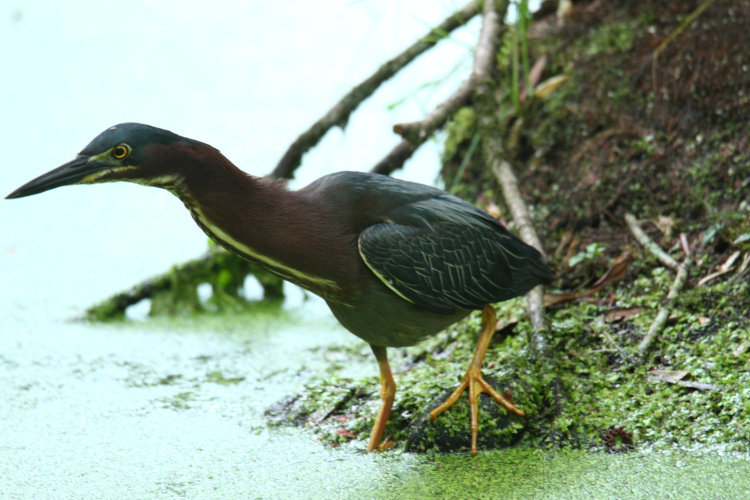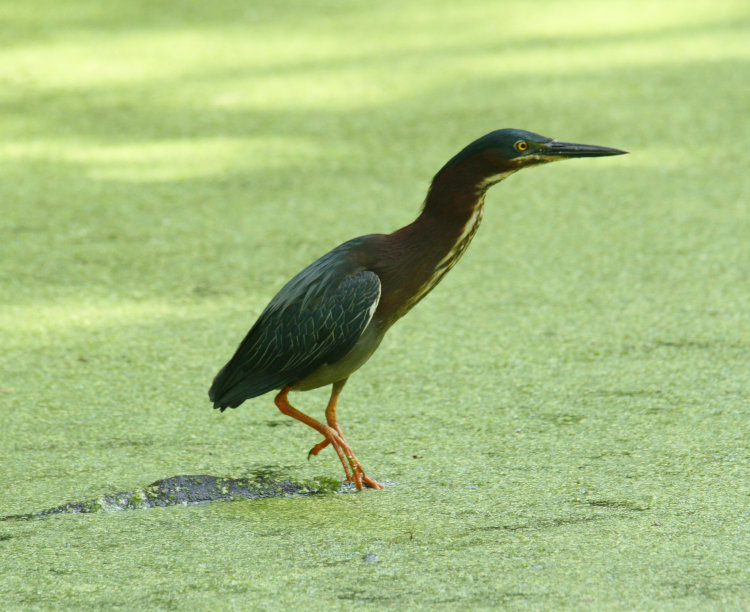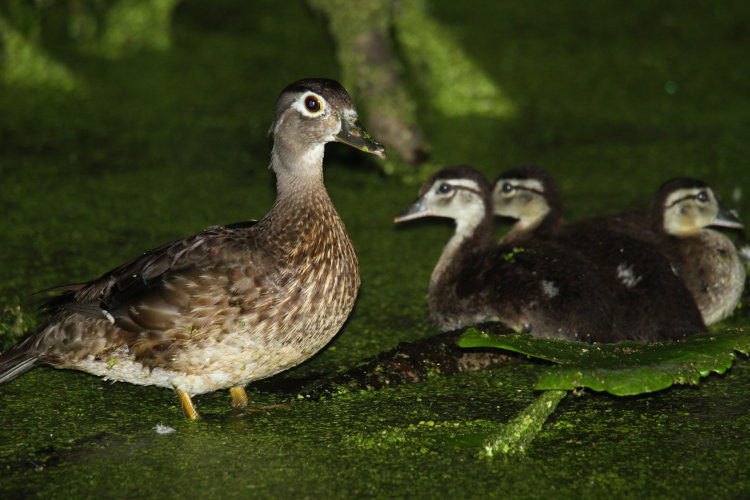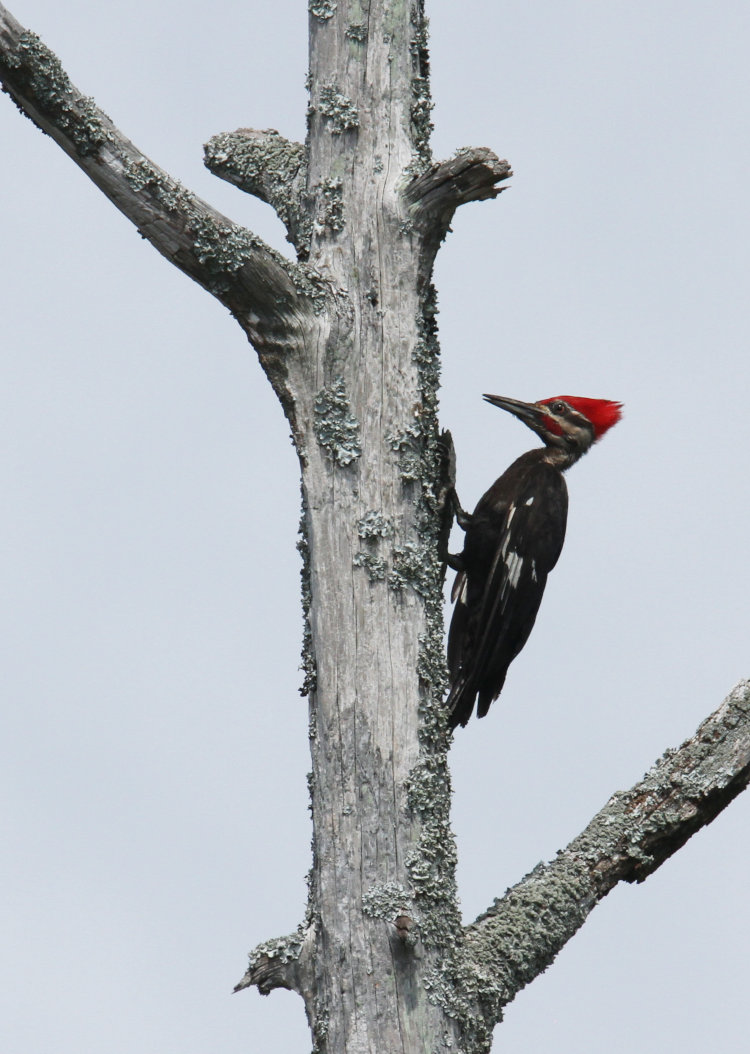I’ve got a couple of topics that I’m planning to tackle, including a lengthy rebuttal post that’s in process but deserves a lot of editing attention, and a whole lot of images in the folder awaiting attention – just, not the time or energy to tackle bigger posts at the moment. So what we have now is a bunch of scattered stuff that I’m throwing at the wall, just to maintain content (especially since the near-future suggests that I may not have a lot of time to do so then.)
The green heron (Butorides virescens) makes semi-regular appearances on the pond out back – no real schedule, and obviously not here all the time, but it certainly hasn’t abandoned us either.

Here it is hunting from the edge of Duck Island, which is only a couple of trees just a few meters into the water, retaining the soil around them, but it’s amusing seeing how many critters make use of it. Obviously, it got its name because the ducks are on it frequently, but the green heron likes it too, and it serves as a turtle basking spot when the sun is at the right angle, and I even briefly saw a beaver perched on it, though so far that was an isolated occurrence. It’s convenient for us, however, in that it’s the closest point to the house and is easily visible through the back windows, even though the sharp-eyed wood ducks can also see into those same windows and we occasionally have to move slowly, or not at all, to keep from spooking them off.

To the best that I can determine, we only have one green heron visiting, and honestly, we’re probably lucky to have that. As you can see, the duckweed completely shields the surface of the water most times and prevents any waders from seeing much of their prey. Heavy rains will occasionally wash out a bit of this and expose patches of clear water briefly, but within two days the duckweed has grown to fill in the gaps. Yet, it also reveals paths that swimming animals take across the pond sometimes, and lets us know where the duckling broods go or if the beavers have been around.

We have at least three different broods of wood ducks (Aix sponsa) that visit, again, off and on. We’ve already seen the brood of twelve, and this is a batch of five ducklings (which might actually be two batches – not sure about this yet) even though only four are visible in this pic; in the leaves just under mama’s breast is one looking in our direction. I consider myself lucky to get any of these, since the wood ducks (as mentioned numerous times before) are quite spooky and protective, and I’m never within 20 meters of the ducklings. Except on certain occasions.

This is a lot closer than 20 meters, less than 10 I believe, and is actually full-frame, unlike the image preceding. It was achieved by approaching their nighttime roosting spot with the spotlight of the headlamp, the dazzle of which prevented them from knowing it was me or how close I was. Nonetheless, they soon moved off the submerged branch here and scooted under cover. You can easily tell these ducklings are much larger than the previous, but is this a brood of three, or the second brood of five that underwent some attrition? Ducks have a lot of ducklings because they’re so vulnerable to losses, unable to fly or swim/run too fast, and while this pond is pretty damn safe from predators, they don’t spend all their time here (not to mention considering us likely predators and so unwilling to establish a pattern of visits/vulnerability.) Does the lower pond house largemouth bass or snapping turtles, or allow better access by foxes and raccoons? We don’t know; so far we haven’t been able to see anything except the edges of a large bayou-like area, and I haven’t attempted to get the kayak into there yet.
And a last one for now, from the recent visit to Goose Creek State Park:

I saw this pileated woodpecker (Dryocopus pileatus) cruise past and tracked it visually until it landed, then shifted around for a decent view, even though the sky wasn’t all that cooperative that day. The nice thing about a few of the woodpecker species in this area is that they have distinctive white patches on largely black wings, so even at a glance as they flit past you can determine that they’re woodpeckers. Not that it’s hard for this species, which is as large as a crow and so fairly obvious. The lean body and greyish facial feathers suggest to me that this is a juvenile, this year’s brood – one of these days I’ll locate a nest to watch. It’s a shame about the age/plumage though, since having bright white feathers on the face would have been a beneficial bit of contrast against the sky and dead wood. Maybe next time.



















































